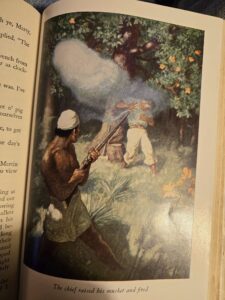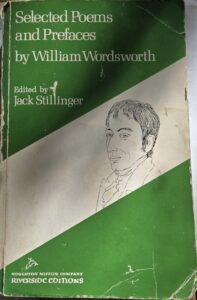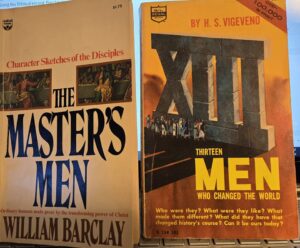
Many years ago I saw the 1962 movie Mutiny on the Bounty, starring Marlon Brando and Trevor Howard. Young as I was at the time, I thought it was a great movie. I remember that I also had a comic book (a graphic novel?) of the Bounty story. But it followed a different story with a different end. I have good memories of both the movie and the comic book, remembering details of what the characters did and what happened to them.
On our living room bookshelf was a book The Bounty Trilogy, containing three novels in one book. I knew it had to be about the Bounty adventure, but didn’t know what it contained. Once I started listing our legacy books for sale, I saw The Bounty Trilogy on the shelf, listed it on Facebook Marketplace, and wished I could read it before it sold. I finished whatever book I was reading sometime last month, and decided, “Why not start it?” At an advertised price of $20, I figured it might not sell quickly. if I could read 10 pages a day, it would take me over two months to finish. I took the book from the sale shelf and started, not being sure whether I hoped it sold or didn’t.

The three novels are
- Mutiny on the Bounty, covering the Bounty‘s sail from England, landing at Tahiti, start of the return trip, the mutiny, the lives of some of the men who went back to Tahiti, including the capture of some and their court martial in England. It is told from the point of view of Roger Byam, an educated man who sailed for the purpose of putting together a grammar and dictionary of the Tahitian language. This is the POV that was in my graphic novel so many years ago.
- Men Against the Sea, telling the story of those sailors loyal to Captain Bligh that were put in the Bounty‘s launch to fend for themselves. Rather than land at some nearby island that was inhabited by people hostile to European boats, Blight sailed the open boat 3,600 miles to the island of Timor, where he knew there was a European colony.
- Pitcairn’s Island. This is where a large number of the mutineers, including Fletcher Christian (2nd in command who led the mutiny), landed to hide out. The island was mis-charted on all British maps. It was almost 20 years before an American boat found them, and another six years before a British ship. By that time all but one of mutineers had died at the hands of others.

The mutiny took place on pages 98-112 of the book. I reached that point after about eight days of reading. The cast of characters split into two points of view: the mutineers and a few loyal men sailing east in the Bounty’s launch sailing west. I decided to read the two POVs simultaneously. That was easy enough, as the open launch reached Timor a couple months, and the Bounty’s contingent reached Tahiti in a similar time frame. It was only a month before those people split up, some remaining on Tahiti and taking their chance that no British ship would visit there soon, and some sailing in the Bounty in search of an isolated place to hide. At that point, I began reading in three places in the volume. That got somewhat complicated, but I think I was able to keep the three POVs straight and chronological.

The book was exceedingly well written. Maybe I’m a sucker for sea exploration, but I devoured this book, finishing it in less than a month. I found the story of Byam’s life faithful to the comic book. Every detail I remembered from all those years ago were in the first book, do that pleased me. Except they talked a lot more about Byam’s dictionary and grammar than I remembered.
One sad part of the book was the death of Byam’s mother, perhaps brought on by an ugly letter Bligh wrote her. She died while Byam was enroute to England to face a court martial.
Toward the end, I was reading at the rate of 50 pages a day. It’s been a long time since I’ve found a book interesting enough to devote this much time to reading. I give the book 5-stars. But is it a keeper? Alas, no. I’ll keep it listed for sale. I hope it goes to someone who really wants to read it.
But, having said all of this, look for my next post, which is a follow-up to this, telling more that I’ve learned.








